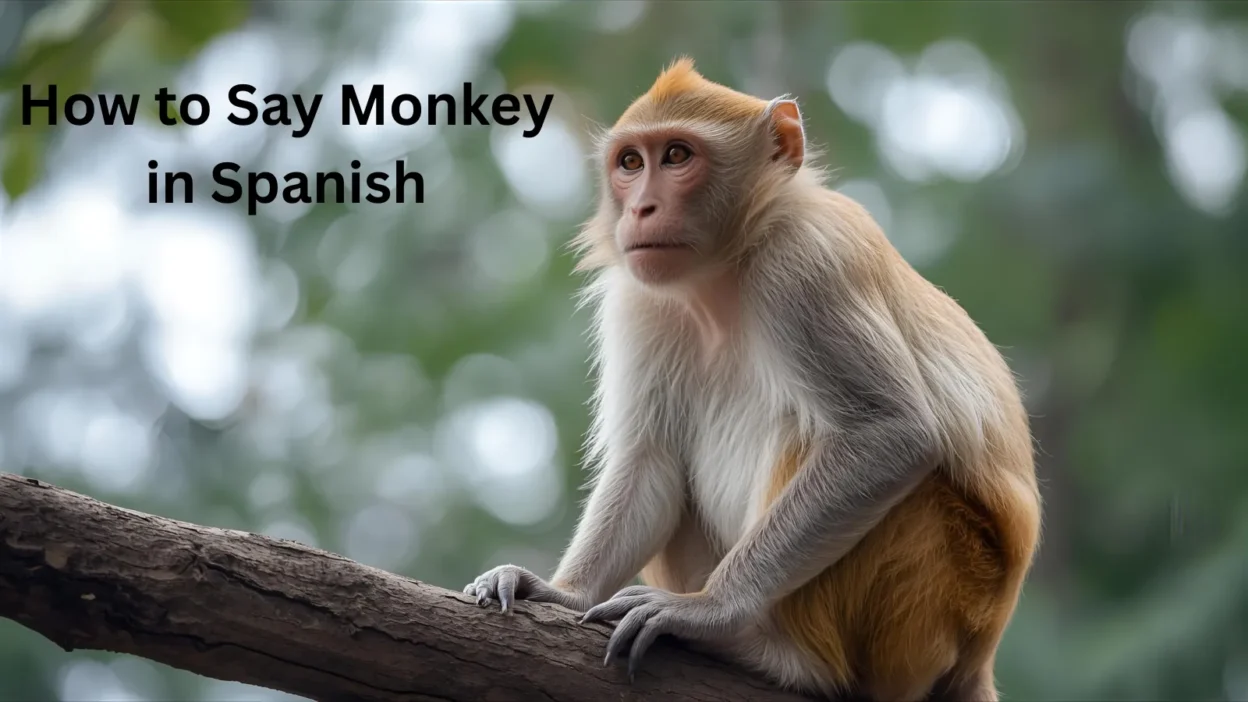Learning how to say monkey in Spanish is simple yet fun, especially if you’re exploring animals in the language. The most common word is mono, but there are other expressions depending on context, region, or even playful uses. Knowing these variations will help you understand everyday conversations, stories, or even children’s books in Spanish.
By learning these phrases, you’ll sound more natural and confident when speaking. Whether in casual chats, travel, or learning, it’s a word that comes up more often than you might think.
Say Monkey in Spanish
Let’s explore 15 different ways to say monkey in Spanish, complete with dialogue examples and origin notes.
🐒 15 Ways to Say Monkey in Spanish
| No. | Spanish Phrase | English Meaning | Usage / Context |
|---|---|---|---|
| 1 | Mono | Monkey | Most common, general term |
| 2 | Monito | Little monkey | Diminutive, cute form |
| 3 | Simio | Ape | Scientific / formal |
| 4 | Changuito | Little monkey | Playful, affectionate |
| 5 | Mico | Small monkey | Common in Latin America |
| 6 | Mono araña | Spider monkey | Specific species |
| 7 | Mono aullador | Howler monkey | Specific species |
| 8 | Mono capuchino | Capuchin monkey | Species name |
| 9 | Mono tití | Tamarin monkey | Small monkey species |
| 10 | Mono ardilla | Squirrel monkey | Specific type |
| 11 | Hacerse el mono | To act silly (lit. be monkey) | Idiomatic expression |
| 12 | Cara de mono | Monkey face | Playful / teasing |
| 13 | Mono de peluche | Toy monkey / stuffed monkey | Everyday context |
| 14 | Mono loco | out of control monkey | Slang / playful |
| 15 | Mono de zoológico | Zoo monkey | Contextual phrase |
1. Mono / Mona
Origin:
The most common and standard word for monkey in Spanish. Mono is masculine, mona is feminine. It can also mean “cute” in some countries!
Example:
👤 User A: Mira ese mono en el árbol.
👤 User B: ¡Qué ágil es! Parece que está bailando.
Use: Universal across most Spanish-speaking countries.
2. Simio
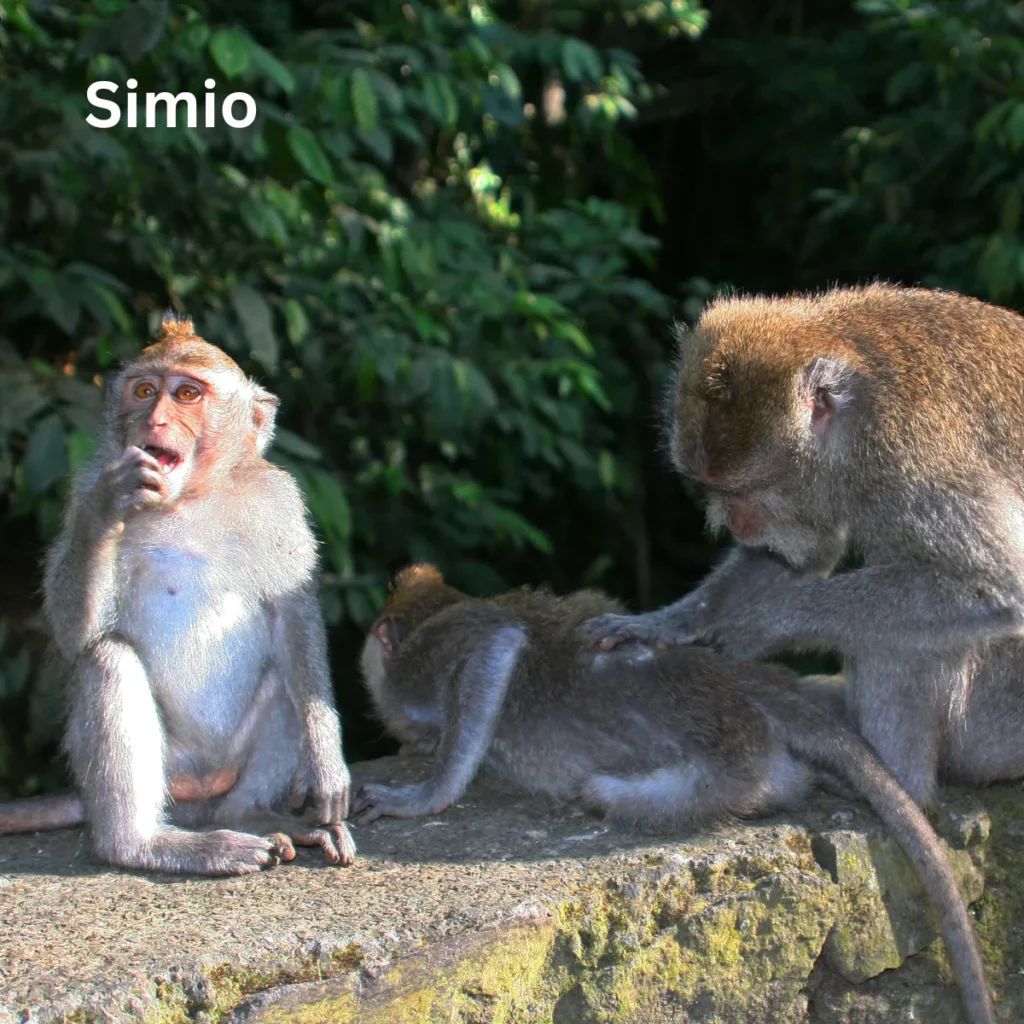
Origin:
From Latin simia, meaning ape or monkey. This term is more scientific or formal and used when referring to primates in general.
Example:
👤 User A: ¿Sabías que los simios tienen una gran inteligencia?
👤 User B: Sí, especialmente los chimpancés y gorilas.
Use: Formal, often in zoology or documentaries.
3. Changuito / Changuita
Origin:
Diminutive form of chango, widely used in Mexico and some Central American countries. Adds a cute or small connotation.
Example:
👤 User A: ¡Mira ese changuito! Está comiendo plátano.
👤 User B: ¡Qué ternura!
Use: Common in Mexico; informal and affectionate.
4. Chango / Changa
Origin:
Used mainly in Mexico, Argentina, and some parts of Central America. May also refer to kids or mischievous people.
Example:
👤 User A: Ese chango me robó la gorra.
👤 User B: ¡Ja! Los monos son traviesos.
Use: Informal and regional.
5. Mico
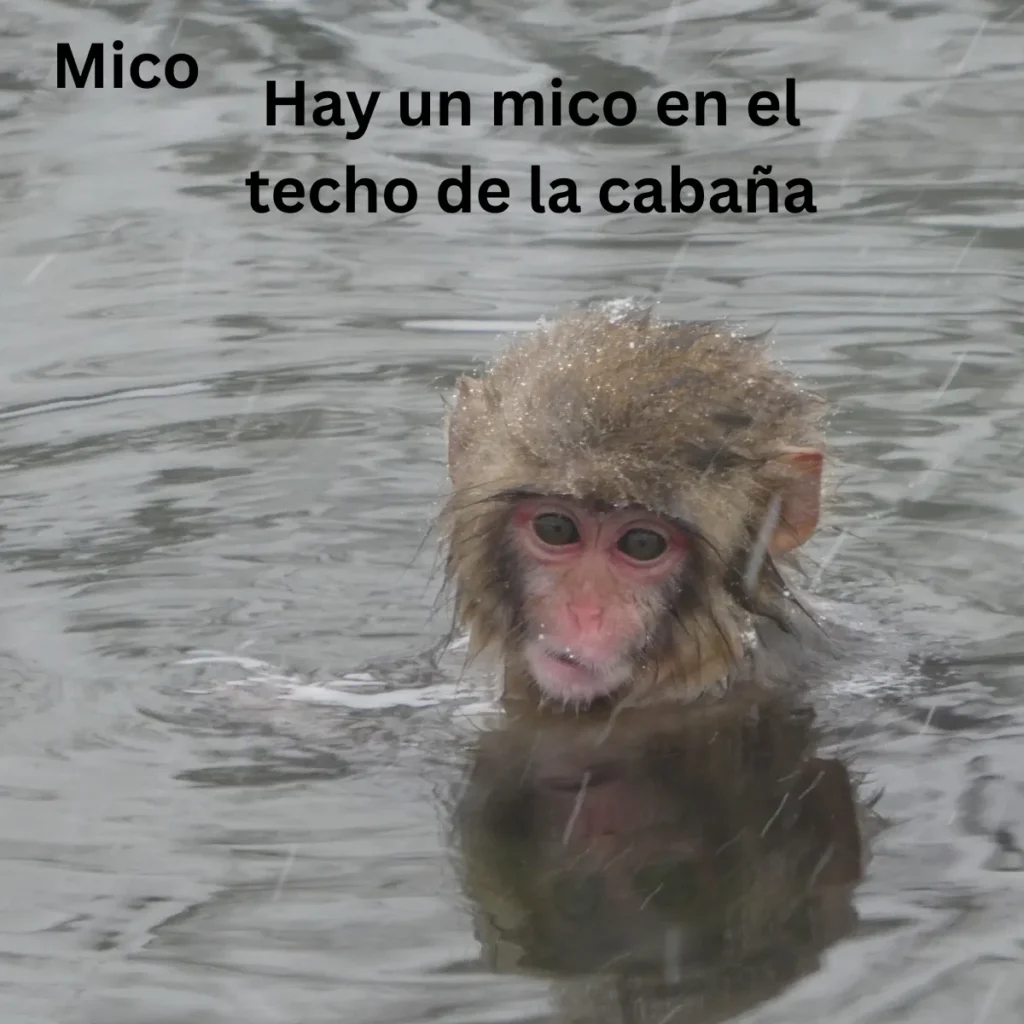
Origin:
Used in Colombia, Venezuela, and parts of Central America. From the Quechua word miku, meaning monkey.
Example:
👤 User A: Hay un mico en el techo de la cabaña.
👤 User B: ¡Qué susto! Pensé que era un gato.
Use: Regional term for monkey; common in rural areas.
6. Tití
Origin:
Used for small monkeys, especially tamarins and marmosets in South America. Comes from indigenous languages.
Example:
👤 User A: En la selva vimos muchos monos tití.
👤 User B: ¡Son tan chiquitos y rápidos!
Use: Scientific or regional; often used in Colombia, Peru, and Brazil.
7. Mono araña
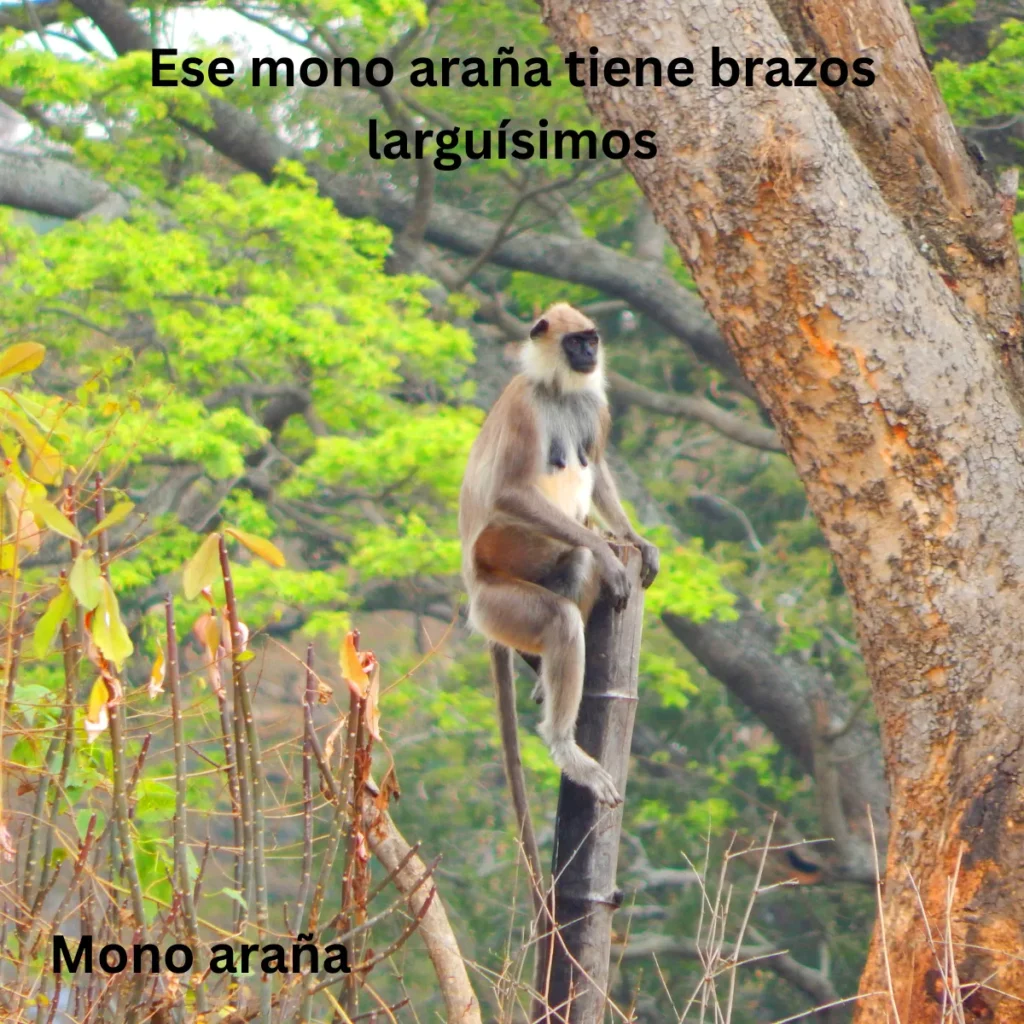
Origin:
Literally “spider monkey.” A specific monkey species native to the Americas.
Example:
👤 User A: Ese mono araña tiene brazos larguísimos.
👤 User B: Perfectos para columpiarse en los árboles.
Use: Biological or zoological; used in nature discussions.
8. Mono capuchino
Origin:
“Capuchin monkey.” Known for their white faces and association with organ grinders.
Example:
👤 User A: ¡El mono capuchino es muy inteligente!
👤 User B: Sí, lo entrenan para películas.
Use: Scientific and casual contexts alike.
9. Mono aullador
Origin:
Howler monkey—famous for its loud calls. Found in forests from Mexico to South America.
Example:
👤 User A: ¿Escuchaste eso?
👤 User B: Sí, es un mono aullador. ¡Qué fuerte suena!
Use: Nature tours, documentaries, or jungle travel.
10. Macaco
Origin:
Used in Spain and some parts of Latin America, borrowed from Portuguese. Refers to macaques and monkeys generally.
Example:
👤 User A: Ese macaco parece enojado.
👤 User B: Mejor no te acerques.
Use: Less common; sometimes used in zoological terms.
11. Monito
Origin:
Diminutive form of mono meaning “little monkey.” Adds a sense of endearment.
Example:
👤 User A: ¡Ese monito está durmiendo!
👤 User B: Awww, qué lindo.
Use: Informal, affectionate.
12. Animalito
Origin:
Means “little animal,” and can be used as a euphemism for monkey when speaking gently to children.
Example:
👤 User A: ¿Qué es ese animalito, mamá?
👤 User B: Es un mono pequeñito, cariño.
Use: Child-friendly, indirect.
13. Ñeque
Origin:
Though technically not a monkey (more like a rodent), in some rural regions of Colombia and Panama, locals might confuse or use the term playfully.
Example:
👤 User A: ¡Ese ñeque parece un mono pequeño!
👤 User B: Sí, aunque no lo es.
Use: Regional, informal, and not scientifically correct.
14. Guariba
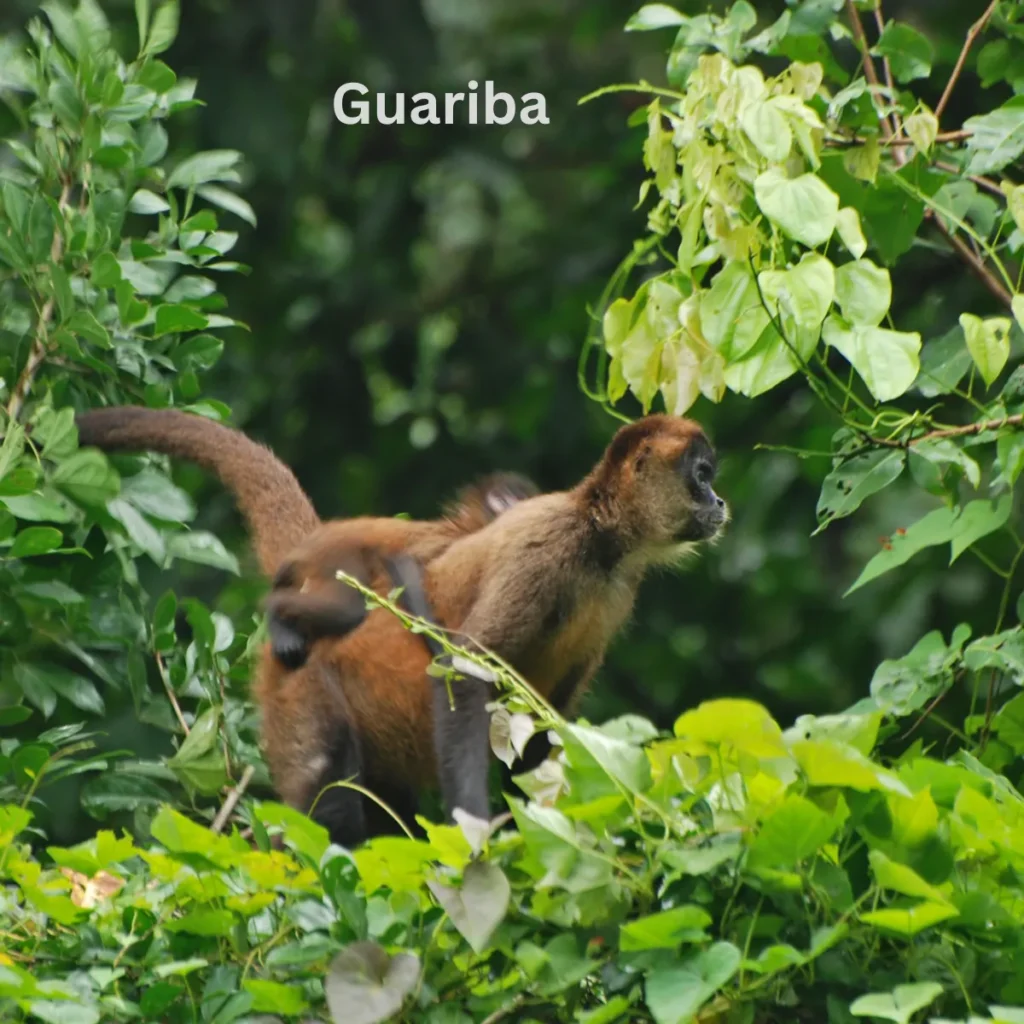
Origin:
Borrowed from indigenous languages in South America; used in parts of Argentina and Brazil to refer to howler monkeys.
Example:
👤 User A: Escuché una guariba anoche en la selva.
👤 User B: ¡Son ruidosas, ¿verdad?!
Use: Specific to regions near the Amazon.
15. Payasito de la selva (“Jungle clown”)
Origin:
A poetic or playful nickname sometimes used for monkeys because of their funny behavior.
Example:
👤 User A: Ese mono parece un payasito de la selva.
👤 User B: ¡Siempre haciendo travesuras!
Use: Playful or storytelling tone, often with kids.
FAQs
1. What is the most common word for “monkey” in Spanish?
The most common word is “mono” (pronounced: mo-no).
2. Is “mono” used in all Spanish-speaking countries?
Yes, mono is widely understood everywhere, though some regions use other local words too.
3. How do I say “a monkey” in Spanish?
You say: “un mono”.
4. What is the plural form of “monkey” in Spanish?
The plural is “monos” (monkeys).
5. How do you say “baby monkey” in Spanish?
You can say “monito” (cute / small monkey).
6. Is there another word besides “mono” for monkey?
Yes, in some areas, people also say “mona” for a female monkey.
7. How do I say “The monkey is funny” in Spanish?
Say: “El mono es gracioso.”
8. How do I say “monkey emoji meaning” in Spanish?
You can say: “El significado del emoji del mono.”
9. How do I say “I like monkeys” in Spanish?
Say: “Me gustan los monos.”
10. Can “mono” also mean “cute” in Spanish?
Yes 😊 In some Spanish-speaking countries, “mono” can also mean “cute”.
Conclusion:
Learning how to say monkey in Spanish goes beyond just memorizing the word mono. With regional variations and fun expressions, you can enrich your vocabulary while connecting with native speakers in more natural and engaging ways. Whether you’re learning Spanish for travel, culture, or daily conversations, knowing animal names like mono makes the language feel more alive and relatable.
